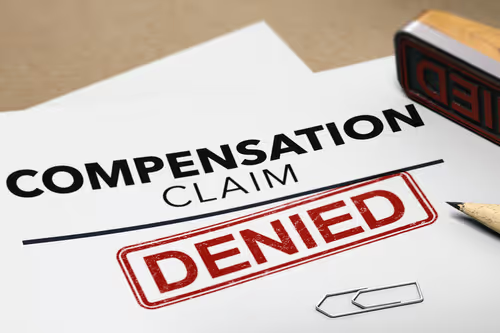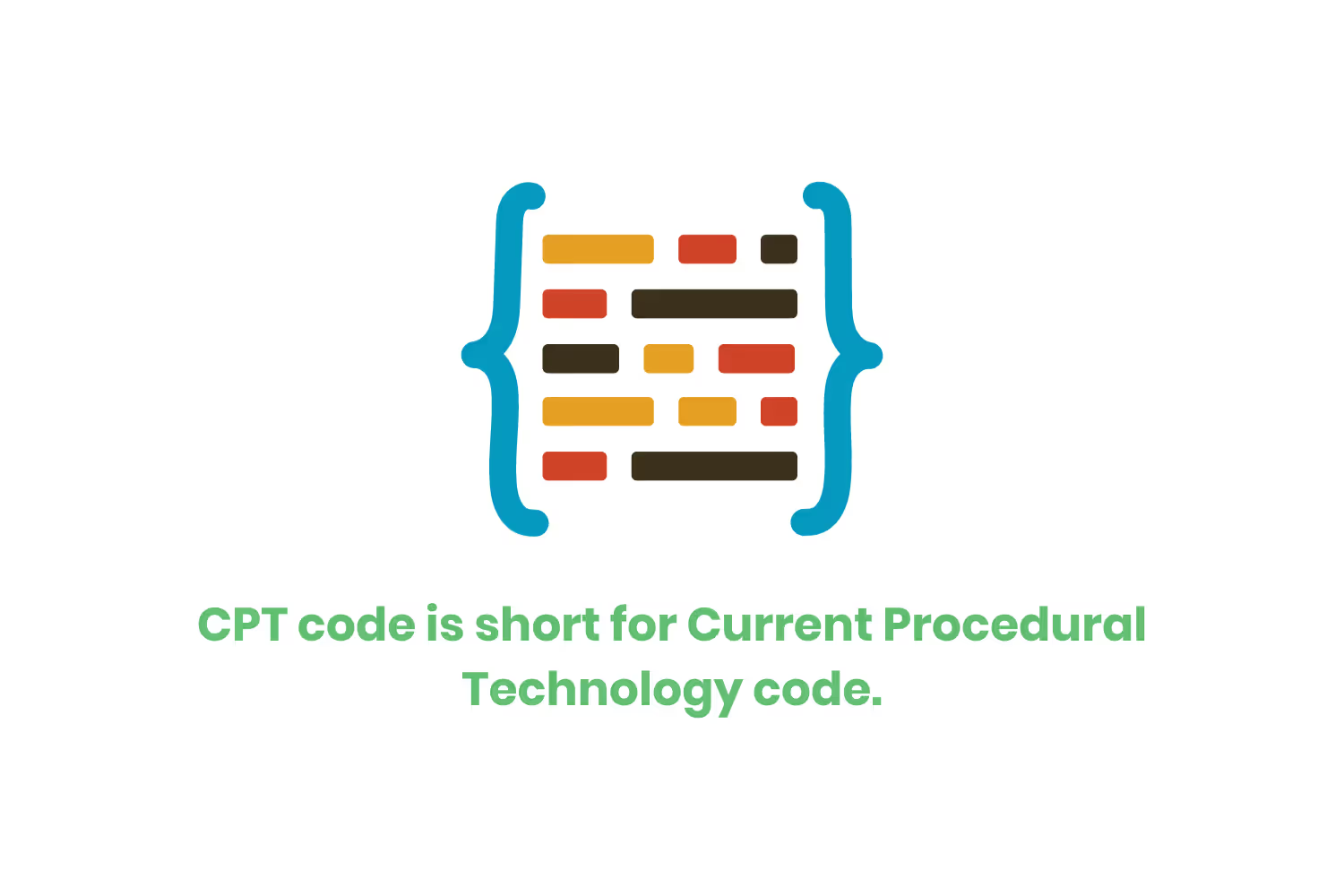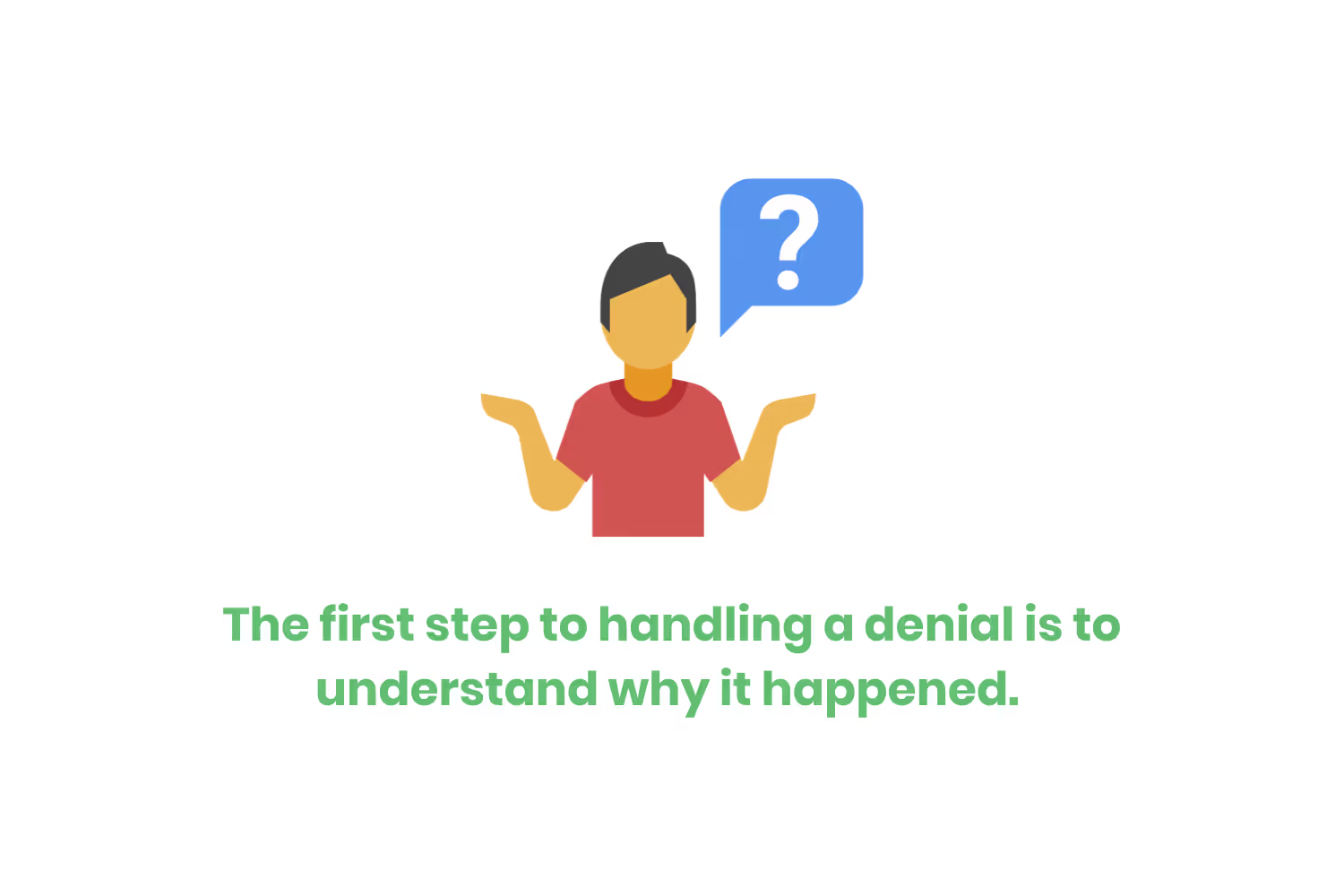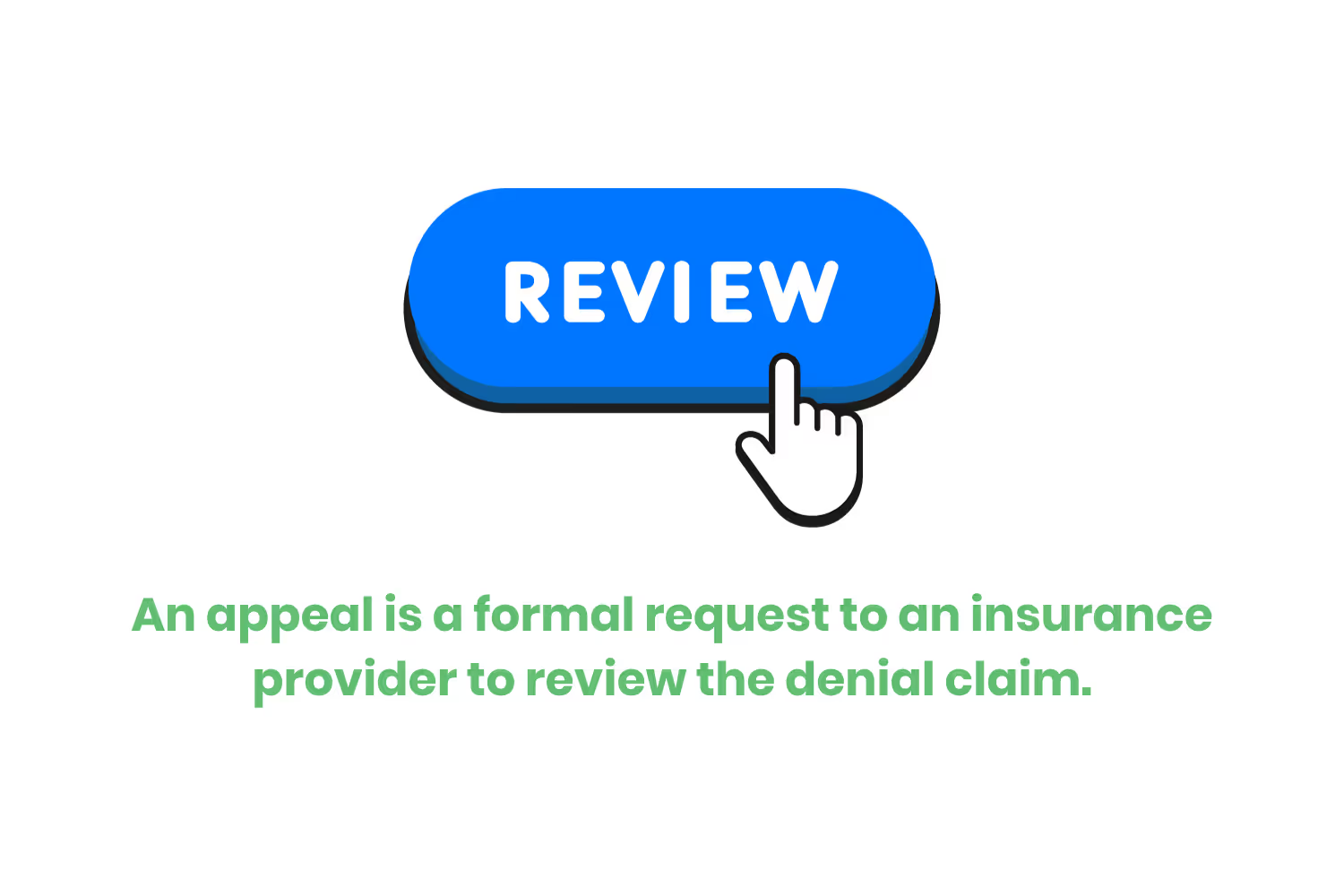How to Handle Denials in Medical Billing: 5 Easy Steps
Receiving denial claims can be very frustrating. It happens to us all! Knowing what to do in the event that you receive one will relieve some stress in this process.

Insurance companies deny between 10% and 20% of healthcare claims each year.
In 2023, nearly 18% of insured individuals experienced a denial claim.
Denials in medical billing are quite common. If you’re working in the healthcare industry, you’re going to run across a denial claim at some point…it’s an inevitability.

In a perfect world, we would have the answer to completely preventing denials from happening. Realistically, that’s not the case. While there are precautions you can take to avoid denials, they aren’t completely preventable. For this reason, it’s important to know what to do in the event that you receive a denial.
Whether you would consider yourself a denial pro or just a beginner, it’s always good to review best practices when handling denials.
Receiving denial claims can be very frustrating. It happens to us all! Knowing what to do in the event that you receive one will relieve some stress in this process.
Denials in Medical Billing FAQ
What is a denial in medical billing?
A denial happens when an insurance company or other carrier denies a request for coverage on healthcare offerings or services for a patient from a professional. Although that definition makes things sound simple, experiencing and working through them in reality isn’t easy.
How do you know that you have received a denial?
There are multiple ways to stay on top of claim denials.
You can check for claim denials in your ERA or electronic remittance advice. The ERA is essentially a place where you can find more information and explanation from the providers about claim payments.
What are denial codes?
Denial codes are an explanation as to why insurance cannot cover a patient’s treatment costs. With this explanation, medical billers can resolve and resubmit the claim.

Why is handling denials important?
Denials are a direct revenue roadblock. They delay incoming payments, consume labor hours, increase administrative costs, and can result in uncompensated care.
Two Types of Denials
From a 3,000 foot view there are 2 types of denials; hard and soft.
There are no ways to resolve a hard denial. It’s a firm or hard refusal by the insurance to pay the claim.
Most of the time, if not all, hard denials result in lost or written off revenue. This is due to the fact that a hard denial requires a formal appeal process from the provider. Usually the provider will choose to skip the appeal process and just abandon the claim.
It’s a lot of work to try to appeal to a hard denial. Put together the amount of time it takes going back and forth and the fact that you have already received a firm no, the chances aren’t looking too good.

A soft denial gives us a little more to work with. We can see the light at the end of the tunnel more clearly with soft denials.
Soft denials mean that there are areas within the claim where revision and resubmission can happen. Oftentimes these areas are just minor mistakes such as missing data or a lack of documentation to support the claim.
Across the healthcare industry 1 in 7 claims get denied, often for a variety of reasons ranging from technical errors to simple administrative mistakes.
Some of the most common denials that are common to come across include:
- Timely filing limit denials
- Non-covered service denials
- Out-of-network provide denials
Timely Filing Limit Denials
Insurance companies can put a time limit on claim submissions. The technical term for this time limit is a timely filing limit. Say an insurance company has a 90-timely filing limit. This means that you have 90 days to submit the claim.
It’s important to stay on top of filing your claims in a timely manner in order to avoid small mishaps such as the timely filing denial.
In order to handle timely filing claim denials, make sure to attach or include proof that you are filing the form within the time limit.
Non-Covered Service Denials

A CPT code is short for Current Procedural Technology code. A CPT code tells the insurance company what services the healthcare provider wants compensation for.
A non-covered service denial occurs when a CPT code that’s billed isn’t covered by the patient’s insurance.
Non-covered services can look like but aren’t limited to therapy, psychological testing, or more niche or specific services catered to a certain group or diagnosis.
In order to prevent a denial such as this, eligibility checks should occur to make sure to review the patient's insurance coverage and benefits.
Out-of-Network Provider Denials
An out-of-network provider denial takes place when the insurance company and the practice that completed the medical treatment don’t have a relationship. They’re outside of each other's network so they will not cover the costs for the services provided.
Scenario
Denials come in all shapes and sizes and some are easier to handle than others. No matter what the denial may be, there’s a somewhat similar pattern of how they happen. Let’s walk through a scenario of how denial codes come to surface in the medical billing industry.
First, a patient or client makes a request for coverage on healthcare offerings or services. The healthcare practice will submit a request for payment to the patient’s insurance company or other carrier for the professional services performed.
The patient’s insurance company will review the request as well as the information provided. After review the insurance will either accept or deny this request.
We know that when the request comes back in a “denied” status…it’s called a denial.

When denied, the insurance will notify the medical professional with a denial claim that states why the request failed through softwares such as the ERA.
So essentially a denial is just that. It’s a denial of service coverage and therefore payment.
From there, the medical practice decides whether or not they want to make adjustments and/or fixes to the claim in question and resubmit it. Resubmitting a “fixed” claim has the opportunity to lead to payment.
The back and forth process between fixing claim denials can be a meticulous process. It is not ideal but if not dealt with properly, it can cause practices a lot of lost revenue.
It may not seem like a lot of revenue lost here and there, but it adds up.
5 Steps for Handling Denials in Medical Billing
Knowing how to handle denials efficiently and effectively means less money out of your pocket.
It also allows you to spend more time actively working within your field than having to worry about the back end side of things.
Denials are equally as frustrating for workers in the healthcare industry as it is for the patients or clients.
In the case that you receive a claim denial, let’s go through the steps on how to fix it.
Step 1: Review

So when you receive the denial what do you do?
The first step to handling a denial is to understand why it happened. Although this step seems pretty straightforward, in reality it can get pretty dicey and confusing if you don’t know what to look for.
As mentioned previously, when an insurance company or carrier denies the claim, they have to provide an explanation as to why the denial was not accepted. This is where you will find the denial code.
Once you are able to understand how the claim became a denial you are able to move forward with the next step.
Step 2: Revise
Now that you understand why the denial occurred, you know the necessary corrections that need to take place.
This could mean additional information or including things that were missing from before. It could also be fixing grammatical errors or misspellings.
It’s important that you carefully review all the information and make sure that all the relevant and additional information exists within the claim for the insurance.
This will give the insurance company a better understanding of the situation and what exactly you’re requesting coverage for. Be as detail oriented and specific as you can be. Examples of additional information that can affect a claim’s status are a patient’s medical records, test results, or proof of a patient’s treatment progress.
With an understanding of why your claim was first denied and then making the appropriate revisions you are able to move to the next step and make your appeal.
Step 3: Request Appeal
So you have a clear understanding of the denial claim and made the necessary changes to fix the error or errors.
The next step is to make your appeal.
So what is an appeal? An appeal is a formal request to an insurance provider to review the denial claim.

There are two types of appeals.
- Internal appeal
- External appeal
An internal appeal involves asking the insurance company to reconsider its decision now given the revised request for payment.
An external appeal is appealing the insurance company’s decision. It’s taking it out of their hands and having the claim externally reviewed by a third party. This means that the insurance company now does not have the final say as it is up to the third party reviewee.
Step 4: Reach Agreement
Once you’ve submitted your appeal, it’s in the insurance company’s hands for review.
Depending on the denial and the revised changes, either the insurance will accept your claim or they will continue to deny it.
If they accept it…yay!
If not…don’t lose hope yet. You can repeat the previous steps and revise the claim again. The provider will continue to provide you with reasoning as to why the claim was not accepted.
This step might take awhile in the process due to going back and forth between your healthcare practice and the insurance company.
So what can we do to try to avoid this as much as possible? Let’s go into our 5th and final step.
Step 5: Reinstitue Preventative Processes
Once you’ve dealt with a denial code, chances are you will want nothing to do with them. Unfortunately, they’re still going to keep coming.
That’s why it’s essential to implement precautionary measures into your organization.

Reviewing claims for any common mistakes and knowing what to be on the lookout for will help you to reduce denials. Making sure to do so in a timely fashion is a way to stay on top of denials as well.
Denials coming back to your organization are signifiers of process improvement. In other words, they’re telling you that there are fixable errors in your claim submission process. Once you fix the bottlenecks in your claim submission process that lead to denials…you’ll decrease the amount of denials you receive and increase your revenues.
Benefits of Knowing How to Handle Denials
There are many benefits to understanding how to handle and manage medical denials.
Knowing how to handle denials ultimately saves you time. Having a set regimen in order relieves some of the stressors of what to do in the event that you’re dealing with a denial. It gives you a place to start and also helps keep the whole process of submitting and resolving a denial in order.
Time is money. Less time dealing with denials means more time put into other efforts. Denials are a direct block to revenue. Knowing how to handle denials helps you avoid paying for claims out of your own pocket.

Handling denials efficiently decreases frustrations amongst fellow colleagues in the healthcare field, insurance companies, and even patients. There’s less going back and forth between parties.
Handling denials, as well as knowing how to prevent them, ensures that your patients are able to receive the highest level of care possible without having to worry about any inconveniences.
While putting all of this information into practice is great, working with claims can get daunting to handle on your own. Reviewing and submitting claims takes up a lot of time that can be spent actively working in your practice.
Working with a clearinghouse partner is a great way to relieve the stressors of denial claims off your plate.
Benefits of The Right Clearinghouse Partner
While putting all of this information into practice is great, working with claims can get daunting to handle on your own. Reviewing and submitting claims takes up a lot of time that can be spent actively working in your practice.
Working with a clearinghouse partner is a great way to remove the stressors of denial claims off your plate. Partnering with a clearinghouse company not only speeds up the collection process, but allows for better administrative efficiency.
Clearinghouse companies, like Etactics, perform functions such as claim scrubbing and claim submission tracking.

Claim scrubbing checks for misspelled words BEFORE sending out claims in order to ensure that there are no errors within the claim.
Claim submission tracking follows your insurance submission claims to ensure your claims are in the right place.
Etactics has over 20 years of experience in the 3rd party clearinghouse industry. Overtime we have been able to cultivate established relationships with a variety of insurance companies in order to reduce the amount of discrepancies in the world of medical billing.
Working with knowledgeable clearinghouse partners makes it easier to sleep at night knowing your claims are being set up for success.
Conclusion
Having a certain regime on how to deal with denials when they come, because they will, saves you time and ensures that your patients are able to receive the utmost level of care.
Denial management is important. Handling denials can be frustrating and costly, but you don’t have to do it on your own.
Clearinghouse partners allow you to better analyze claims, engage with insurance carriers and patients, and leverage the technology associated with it.
Reach out to Etactics to protect your bottom line.
Emphasize your product's unique features or benefits to differentiate it from competitors
In nec dictum adipiscing pharetra enim etiam scelerisque dolor purus ipsum egestas cursus vulputate arcu egestas ut eu sed mollis consectetur mattis pharetra curabitur et maecenas in mattis fames consectetur ipsum quis risus mauris aliquam ornare nisl purus at ipsum nulla accumsan consectetur vestibulum suspendisse aliquam condimentum scelerisque lacinia pellentesque vestibulum condimentum turpis ligula pharetra dictum sapien facilisis sapien at sagittis et cursus congue.
- Pharetra curabitur et maecenas in mattis fames consectetur ipsum quis risus.
- Justo urna nisi auctor consequat consectetur dolor lectus blandit.
- Eget egestas volutpat lacinia vestibulum vitae mattis hendrerit.
- Ornare elit odio tellus orci bibendum dictum id sem congue enim amet diam.
Incorporate statistics or specific numbers to highlight the effectiveness or popularity of your offering
Convallis pellentesque ullamcorper sapien sed tristique fermentum proin amet quam tincidunt feugiat vitae neque quisque odio ut pellentesque ac mauris eget lectus. Pretium arcu turpis lacus sapien sit at eu sapien duis magna nunc nibh nam non ut nibh ultrices ultrices elementum egestas enim nisl sed cursus pellentesque sit dignissim enim euismod sit et convallis sed pelis viverra quam at nisl sit pharetra enim nisl nec vestibulum posuere in volutpat sed blandit neque risus.

Use time-sensitive language to encourage immediate action, such as "Limited Time Offer
Feugiat vitae neque quisque odio ut pellentesque ac mauris eget lectus. Pretium arcu turpis lacus sapien sit at eu sapien duis magna nunc nibh nam non ut nibh ultrices ultrices elementum egestas enim nisl sed cursus pellentesque sit dignissim enim euismod sit et convallis sed pelis viverra quam at nisl sit pharetra enim nisl nec vestibulum posuere in volutpat sed blandit neque risus.
- Pharetra curabitur et maecenas in mattis fames consectetur ipsum quis risus.
- Justo urna nisi auctor consequat consectetur dolor lectus blandit.
- Eget egestas volutpat lacinia vestibulum vitae mattis hendrerit.
- Ornare elit odio tellus orci bibendum dictum id sem congue enim amet diam.
Address customer pain points directly by showing how your product solves their problems
Feugiat vitae neque quisque odio ut pellentesque ac mauris eget lectus. Pretium arcu turpis lacus sapien sit at eu sapien duis magna nunc nibh nam non ut nibh ultrices ultrices elementum egestas enim nisl sed cursus pellentesque sit dignissim enim euismod sit et convallis sed pelis viverra quam at nisl sit pharetra enim nisl nec vestibulum posuere in volutpat sed blandit neque risus.
Vel etiam vel amet aenean eget in habitasse nunc duis tellus sem turpis risus aliquam ac volutpat tellus eu faucibus ullamcorper.
Tailor titles to your ideal customer segment using phrases like "Designed for Busy Professionals
Sed pretium id nibh id sit felis vitae volutpat volutpat adipiscing at sodales neque lectus mi phasellus commodo at elit suspendisse ornare faucibus lectus purus viverra in nec aliquet commodo et sed sed nisi tempor mi pellentesque arcu viverra pretium duis enim vulputate dignissim etiam ultrices vitae neque urna proin nibh diam turpis augue lacus.




